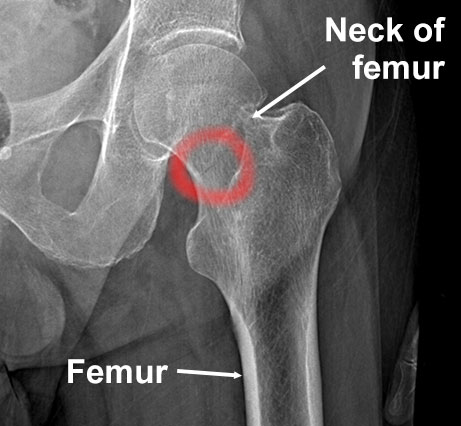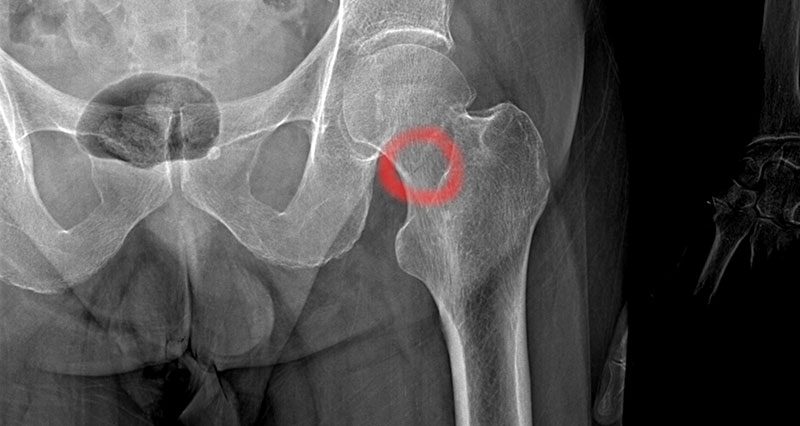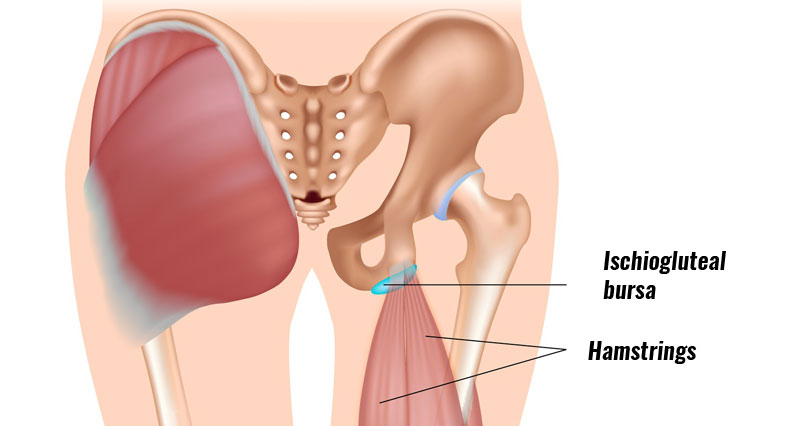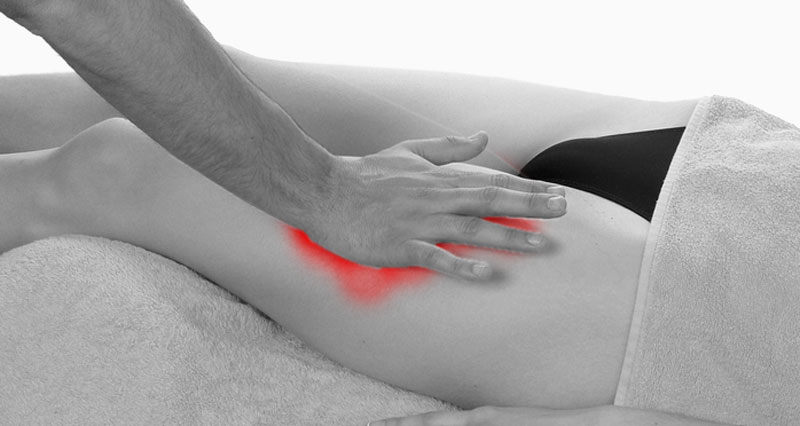A Femur stress fracture is a hairline fracture of the femur (thigh bone). Although quite rare, it is caused by prolonged overuse. Pain develops gradually as a dull ache, which intensifies if a bending force is applied to the femur.
Medically reviewed by Dr Chaminda Goonetilleke, 21st Feb. 2022
Symptoms of a femoral stress fracture
- Symptoms include a dull ache deep in the general area of the thigh.
- There is likely to be pain when a bending force is applied to the femur. This is known as the hang test. The patient allows their thigh to hang over the edge of a bench or chair. A weight is then applied downwards onto the thigh. If pain is reproduced then the test is positive and it may be a femur stress fracture.
- Symptoms may also be referred to the knee.
- An X-ray may or may not show up the stress fracture but a bone scan or MRI should give a more accurate diagnosis.
What is a stress fracture of the femur?

The femur bone is the long thigh bone. Prolonged overuse can cause a stress fracture. This is known as a femoral stress fracture. As with any bone, the Femur can also be fractured through one sudden force (see fractured femur).
Treatment
- Rest is important, particularly resting from weight-bearing activities.
- Maintain fitness by swimming or cycling.
- Identification of any biomechanical problems such as overpronation which may have contributed to the stress on the femur.
How long will it take to heal?
- Depending on the severity it should take 7 weeks from the time that the ‘hang test’ (over the edge of the chair) is not painful before a gradual return to sports-specific training can begin.




